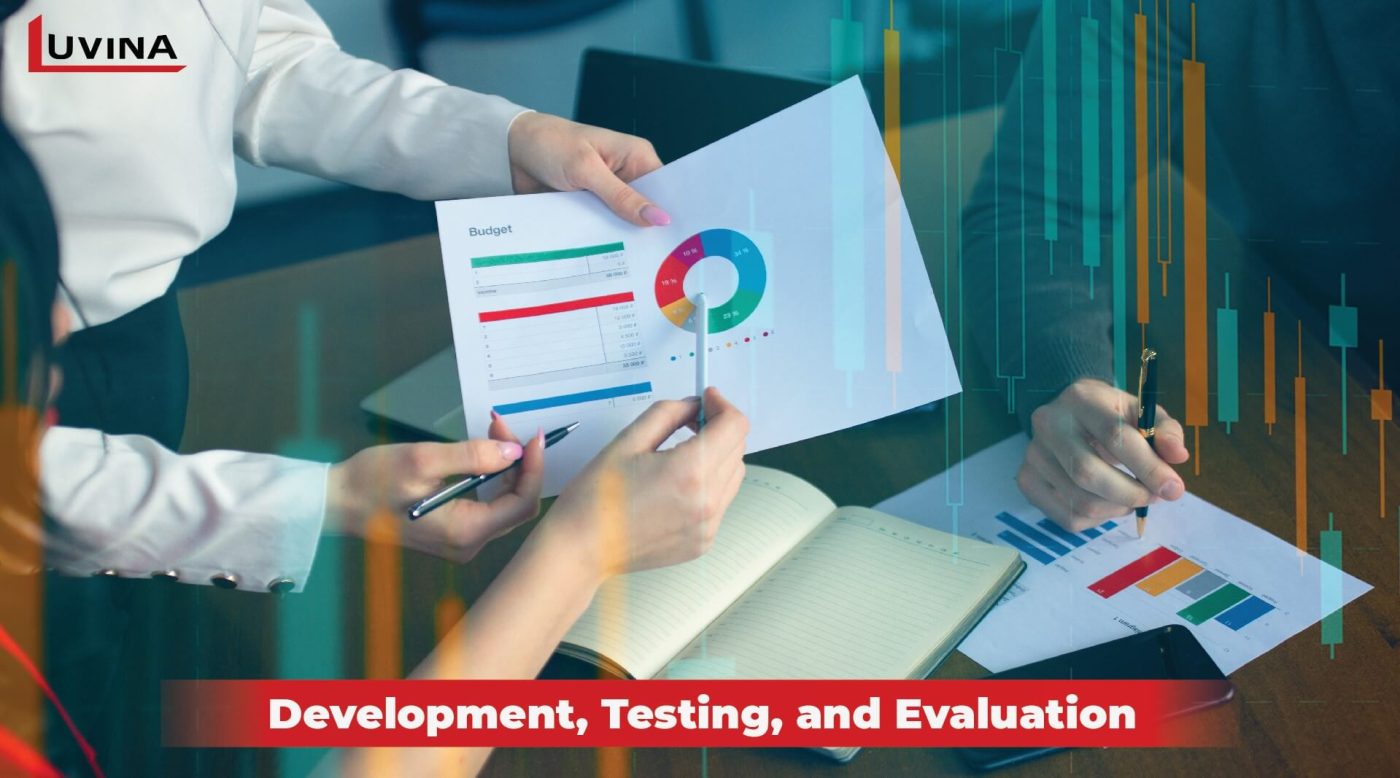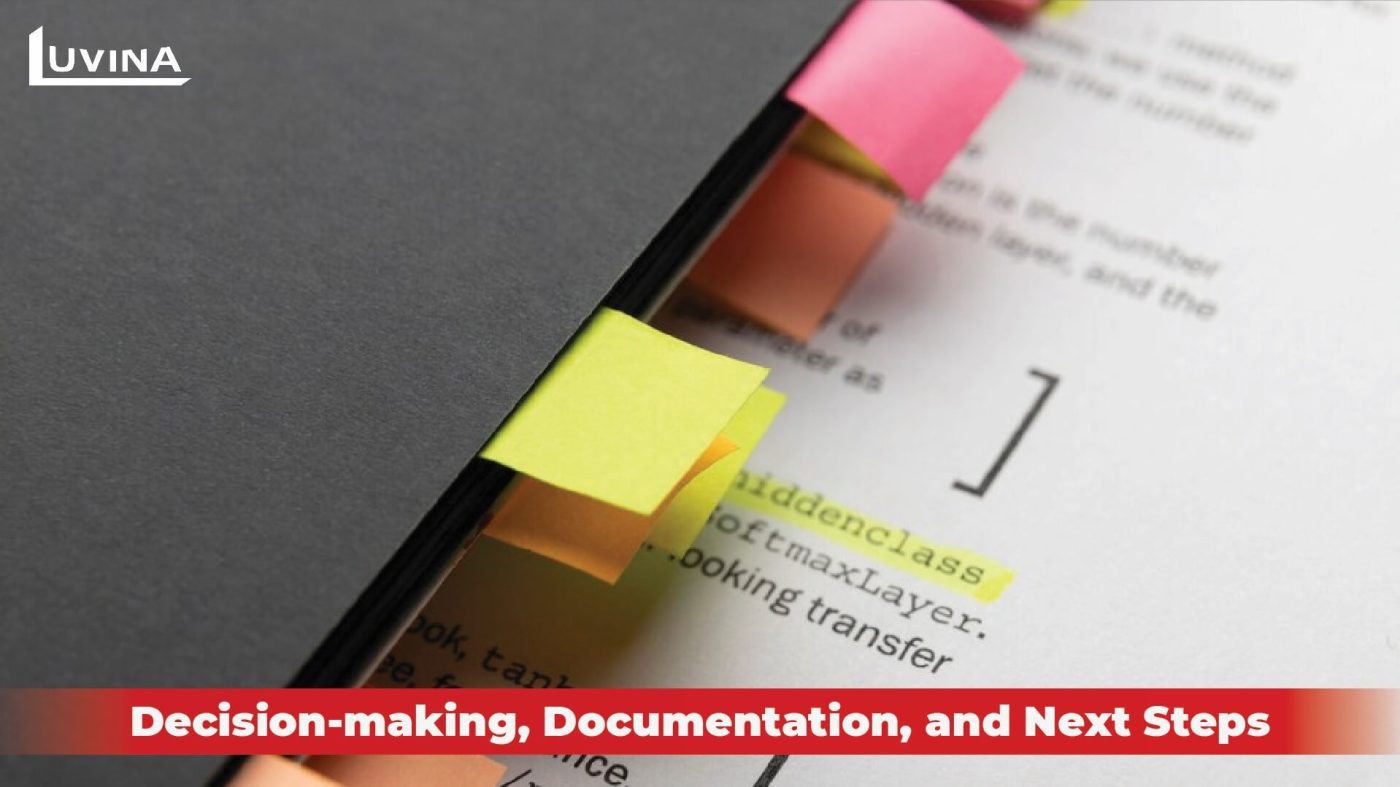In the realm of software innovation, Proof of Concept (POC) development stands as a beacon of validation and assurance. It’s the crucible where ideas transition from mere concepts to tangible, viable solutions. This critical phase demands a strategic blueprint, a carefully orchestrated symphony of steps, each playing a pivotal role in steering the POC toward triumph.
Embarking on the journey of POC development necessitates a comprehensive understanding of the essential steps that lay the groundwork for success. These steps, when meticulously traversed, sculpt a pathway for efficient validation, seamless iteration, and informed decision-making.
Join us on an illuminating exploration as we delve into the nine indispensable steps that chart the course for a successful POC development process. From inception to execution, these steps serve as the cornerstone, shaping the journey that transforms ideas into impactful realities.

Step 1: Identify Objectives and Scope
The success of a Proof of Concept (POC) hinges on clearly defined objectives and a well-established scope:
– Clarify Objectives: Define specific goals the POC aims to achieve. What problem does it address? What aspect of the concept needs validation?
– Scope Definition: Outline boundaries and limitations. Determine the functionalities or scenarios the POC will cover.
– Alignment with Overall Goals: Ensure POC objectives align with broader project or organizational objectives.
– Document and Communicate: Create clear documentation for reference and efficient communication among stakeholders and teams.
– Continuous Review: Regularly revisit and refine objectives and scope to align with evolving project needs.
A focused and well-defined starting point sets the tone for a successful POC journey, guiding subsequent actions toward achieving targeted outcomes.
Step 2: Research and Planning
This phase is the foundation of POC development and consists of:

1. Thorough Research
– Understanding the Landscape: Dive deep into the technology, market, or problem area targeted by the POC. This comprehensive grasp informs strategic decisions and solution design.
– Gathering Insights: Analyze existing solutions, market trends, and potential competitors. Identify pain points, user preferences, and emerging tech impacting the POC’s success. This research is pivotal for defining the POC’s direction and confirming its relevance.
2. Strategic Planning
– Defining Scope and Objectives: Based on research, outline the POC’s scope, objectives, and key milestones. Define the specific functionalities or features it will cover to achieve its goals.
– Resource Allocation: Identify and allocate necessary resources—human, technological, and financial—aligned with the defined scope and objectives.
– Establishing a Timeline: Develop a structured timeline delineating the stages of POC development.
This phase integrates comprehensive research with a strategic plan, laying a sturdy groundwork for an efficient and purposeful POC journey.
Step 3: Conceptualization and Design
This phase focuses on creating a comprehensive plan:
1. Detailed Blueprint
– Technical Architecture: Develop a robust plan outlining the necessary infrastructure, frameworks, and technologies for the POC’s development. This blueprint ensures scalability and compatibility.
– Functionalities and Core Features: Specify the essential functionalities and features crucial for testing within the POC. This breakdown guides the development process, ensuring a targeted approach.
2. Development Roadmap
– Guiding Implementation: The detailed plan acts as a roadmap, guiding the development team on technology choices and implementation strategies.
– Focus on Essentials: By emphasizing technical architecture and core functionalities, this phase ensures a concentrated effort on pivotal aspects.
3. Alignment with Objectives
Ensuring Consistency: Verify that the plan aligns with established objectives, maintaining focus on validating the intended aspects effectively.
This phase lays the groundwork by transforming conceptual ideas into a structured plan, guiding the subsequent development process effectively.
Step 4: Development
This phase focuses on constructing the POC software:

– Essential Functionality: Prioritize integrating crucial functionalities to validate the concept’s feasibility effectively.
– Swift Iteration: Emphasize rapid development cycles to swiftly create a functional POC. The goal is to demonstrate viability rather than achieving a fully scalable solution.
– Efficient Resource Use: Optimize resources for quick POC development without compromising functionality quality.
– Balancing Speed and Detail: Acknowledge trade-offs in scalability or extensive features for quick proof of concept. Maintain an iterative approach for quick adjustments based on initial feedback.
This phase aims for the swift creation of a functional POC, showcasing the concept’s viability.
Step 5: Testing and Validation
This phase focuses on rigorous testing and validation of the POC:
1. Thorough Testing
– Comprehensive Evaluation: Conduct a wide array of tests, ensuring the POC aligns with defined objectives. This includes functionality, performance, and potential edge cases.
– Quality Assurance: Rigorously assess the POC’s reliability, accuracy, and adherence to specified criteria. Verify that it meets predefined benchmarks and standards.
2. Verification of Functionality
– Evaluating Effectiveness: Validate that the proof of concept effectively demonstrates the intended functionality or provides a viable solution for the targeted problem.
– Alignment with Objectives: Ensure that the POC’s outcomes align closely with the initially established objectives, confirming its relevance and effectiveness.
This phase serves as the critical checkpoint, ensuring the POC meets predefined criteria and successfully showcases the intended functionality or solution.
Step 6: Evaluation and Feedback
This phase involves gathering feedback and evaluating the POC:
– Stakeholder Input: Collect feedback from stakeholders, users, or experts involved in the POC process.
– Objective Assessment: Evaluate whether the POC successfully achieved its defined objectives and provided the intended value.
This phase aims to gather insights from stakeholders and assess whether the POC met its predefined goals and delivered the anticipated value.
Step 7: Decision-Making
This pivotal phase revolves around informed decision-making based on the outcomes of the POC:

1. Utilizing Results and Feedback
Informed Judgments: Assess the results obtained and analyze the feedback gathered from stakeholders, users, or experts involved in the POC process. Use these insights as a foundation for making informed judgments about the concept’s viability.
2. Determining Project Direction
– Proceeding with Development: If the POC validates the concept’s feasibility and aligns with objectives, consider proceeding with further development. This involves refining the concept and transitioning into a full-fledged development phase.
– Pivoting the Project: In cases where the POC uncovers the need for substantial alterations or adaptations, consider pivoting the project. This could involve a shift in the concept’s focus or strategy to better meet objectives.
– Consideration for Abandonment: If the POC demonstrates that the concept isn’t viable or doesn’t align with objectives, consider the option to abandon the project. This allows resources to be reallocated to more promising endeavors.
This phase acts as the decision-making cornerstone, directing the project’s future trajectory based on the POC’s outcomes and the insights gleaned.
Step 8: Documentation and Reporting
This phase involves documenting and communicating POC findings:
– Documentation of Findings: Create detailed records outlining the successes, limitations, and findings encountered throughout the POC development process.
– Reporting to Stakeholders: Generate a report or presentation summarizing the results and insights derived from the POC. This communication aims to effectively convey the outcomes to stakeholders.
This phase ensures comprehensive documentation of the POC journey and facilitates clear communication of the obtained results to relevant stakeholders.
Step 9: Future Steps
This phase involves leveraging POC insights for future actions:
Guiding Future Development: Utilize the insights gained from the POC to steer subsequent development phases. Refine the concept, iterate on the existing solution, or explore alternative approaches based on the obtained insights.
After completing the POC development, consider leveraging Luvina’s expertise in full-stack services for further development needs. Luvina offers comprehensive services that encompass the entire development cycle.
>> See more: Explore a POC in software development example
Conclusion
The POC development process serves as a crucial milestone in the software development journey. By diligently following these steps, the process facilitates the validation of concepts, minimizes risks, and empowers informed decision-making. It allows businesses to assess the viability of a concept, enabling them to decide confidently whether to invest further in developing a comprehensive solution or make necessary adjustments to the original idea.
Ready to transform your software vision into reality? Contact Luvina today! Our full-stack services can elevate your project to the next level.









Read More From Us?
Sign up for our newsletter
Read More From Us?
Sign up for our newsletter